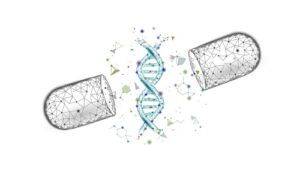Evolution can be understood as the gradual change of something. In short, it is the change in the heritable characteristics of populations over successive generations. Gene variants (also called mutations) make evolution possible. These variants can arise as a result of sudden gene changes or when a genetic material is rearranged within the cell at the reproductive state.
Genetic variations that can alter a gene activity or protein function can introduce the new traits into an organism. If these seem beneficial they are passed on to next generations. Sometimes, the continuous inheritance of gene variants within a population makes the populations so diverse that they are considered as new species.
However, not all variants can influence evolution. Only the hereditary variants which occur in eggs or sperm which can be passed on to offspring can be actively considered as a potential for evolution.
The inherited gene changes also differ from generation to generation, and so do their functions in certain populations.
The sickle cell disease phenomenon:
This condition is inherited if two altered copies of HBB gene are present in each cell, however, inheriting only one copy provides some resistance to malaria. This resistance is found in populations where malaria is prevalent
Human beings are still evolving!
Genetic studies have demonstrated that humans are still evolving.
Blue eyes are another recent-evolved trait and scientists have determined it came from a mutation in a single ancestor 6,000-10,000 years ago. This mutation affected the OCA2 gene, which encodes a protein necessary for the production of melanin, which gives skin, hair and eye color.




